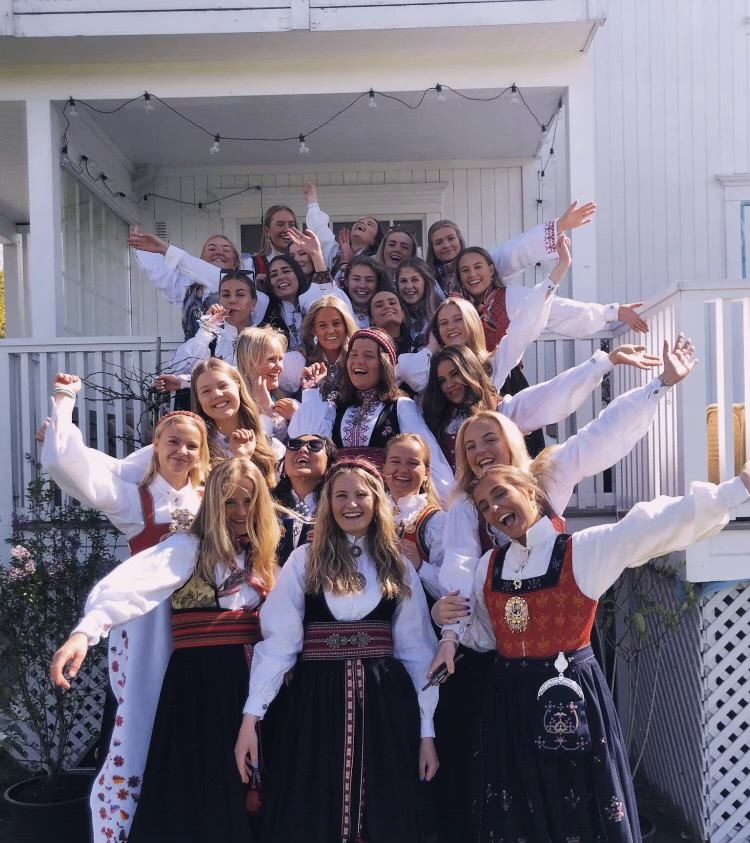

For many Americans, Thanksgiving brings family and friends together and marks the beginning of the holiday season. International students at St. Michael’s College celebrate other holidays at home that similarly bring loved ones together and express their unique cultures.
Olivier Niyonshuti
Olivier Niyonshuti ’25 explained that Rwanda has a holiday similar to Thanksgiving called Umuganura, which is the day of the harvest. Umuganura is celebrated on the first Friday of August. It comes from a tradition in Rwanda where people brought their harvest to the king, Niyonshuti explained.
Today, the tradition is carried on with family and friends. “Everyone can bring something they have harvested and then come together as a family, as friends, as neighbors to share what they have harvested,” Niyonshuti said. “If you have wine bring wine, if you have chicken bring your chicken, if you have rice bring your rice.”
Astrid Bakke
Astrid Bakke ’26 is from Norway and enjoys Thanksgiving in America. She considers it a “bonus holiday” because she celebrates it in addition to her own holidays.
“I have experienced one Thanksgiving, and I am excited for the next one,” said Bakke.
Bakke is spending her Thanksgiving break with the Nordic Ski team in Lake Placid, N.Y.
In Norway, Christmas is like Thanksgiving because of the abundance of food and prioritization of family time, Bakke explained.
Traditional Christmas dinner in Norway usually consists of two types of meat: pinnekjøtt, which is salted and dry sheep ribs, and tynnribbe, which is pork.
For skiers on the Nordic team, Bakke said it is also a tradition to do ski intervals early in the morning on Christmas Eve.
The national day in Norway is the Seventeenth of May or Syttende Mai. It is Norwegian Constitution Day.
People celebrate the whole day on Syttende Mai, Bakke said. “We have big parades, and it has a super good breakfast with your friends. It’s just celebrating the whole day.”
On Syttende Mai, everyone wears their national suits or a bunad.
“Everyone has [a bunad] where their family is from in Norway so there are a lot of different ones,” Bakke explained.
Bakke said it is common to wear their national suit on Christmas as well.
Sawpnil Jhajharia
Swapnil Jhajharia ’24 is from India and explained many of the different Indian holidays. Diwali is the festival of lights, Jhajharia explained.
“It is a time for families to get together and celebrate this time together. There’s gifts and new clothes and good food.”
It celebrates a time when one of the prominent kings in Hinduism returned from 14 years of exile. Diwali is celebrated in the fall and was on Nov. 12 this year.
Jhajharia explained that there are some aspects of the festival he tries to celebrate on his own, but it is difficult because the festival is not a one-person celebration. “Generally, it’s not a big thing for me when I am here.”
Jhajharia said he misses the community engagement aspect of Indian holidays.
One of Jhajharia’s favorite holidays is Makar Sankranti, which is celebrated in January. Families get together and fly kites in celebration of the sun moving into the Capricorn season.
“I like the kite flying one, it is more for kids but it’s fun. No one really cares how old you are when you are flying a kite,” Jhajharia said.
Isabella Paredes Mendoza
In Lima, Peru, one of the most important holidays is New Year’s Eve, said Isabella Paredes Mendoza ’24.
“At home, New Years is a very important holiday because it marks the start for everything, and people take it very seriously.”
In Lima, New Year’s Eve is characterized by many different traditions or rituals, Paredes Mendoza explained.
One of the traditions is eating twelve grapes at midnight, which is good luck. Some people make a wish per grape, Paredes Mendoza said.
Paredes Mendoza said another tradition is eating lentils on New Year’s Eve or carrying lentils around in one’s wallet or pocket. Lentils are a symbol for prosperity and abundance, so people carry them to attract wealth.
Another unique tradition is wearing yellow underwear for good luck. “When it gets close to New Year’s you will see a lot of street vendors selling yellow underwear. The original tradition is yellow for good luck and fortune, but you can also find green underwear for money and red underwear for love,” Paredes Mendoza explained.
Paredes Mendoza said that those who want to travel in the upcoming year must walk around their block with a suitcase. If you want to travel alone, you do it alone, and if you want to travel with family, you do it with family.
“I remember when it was New Years, and I was at home I would go out to see the fireworks and I would see so many people running with suitcases,” Parades Mendoza said.
These traditions are a reflection of Peruvian culture. “It’s very symbolic. I feel like all of these are rituals that reflect a lot of our culture and how much we believe in representation and how much faith we have,” said Paredes Mendoza



